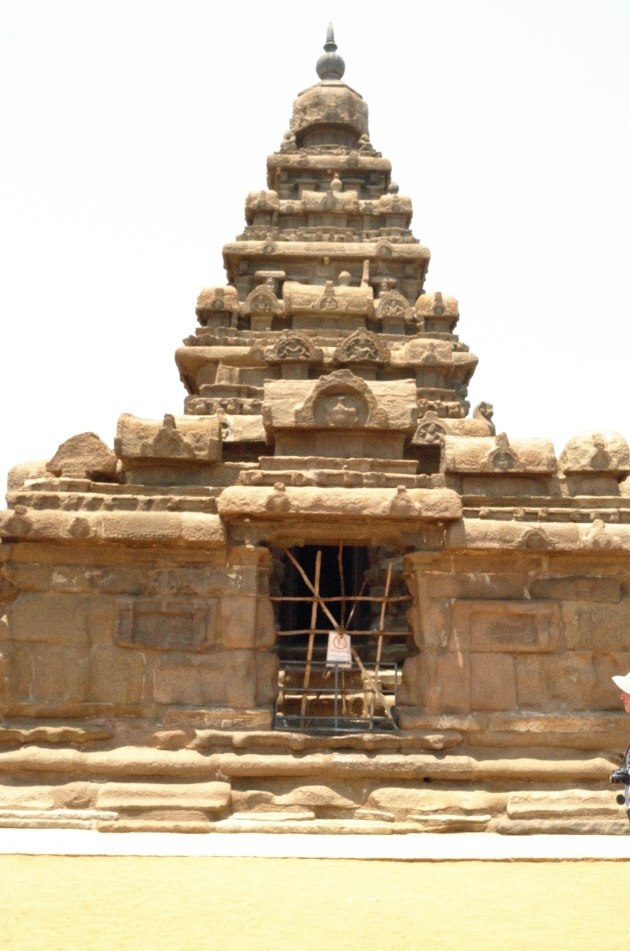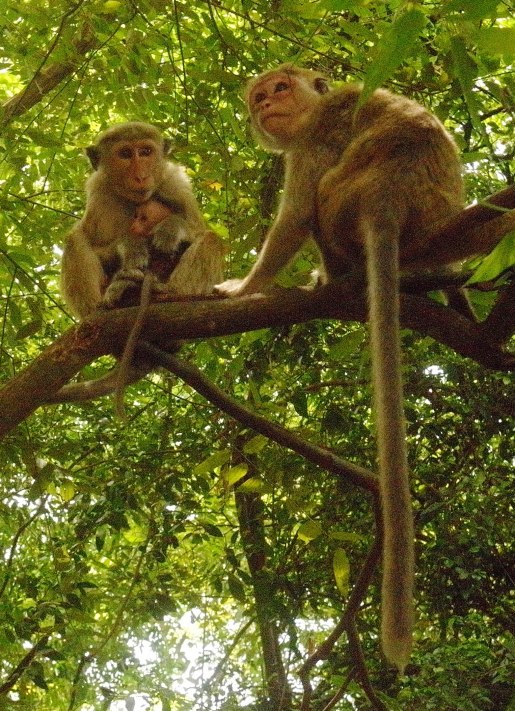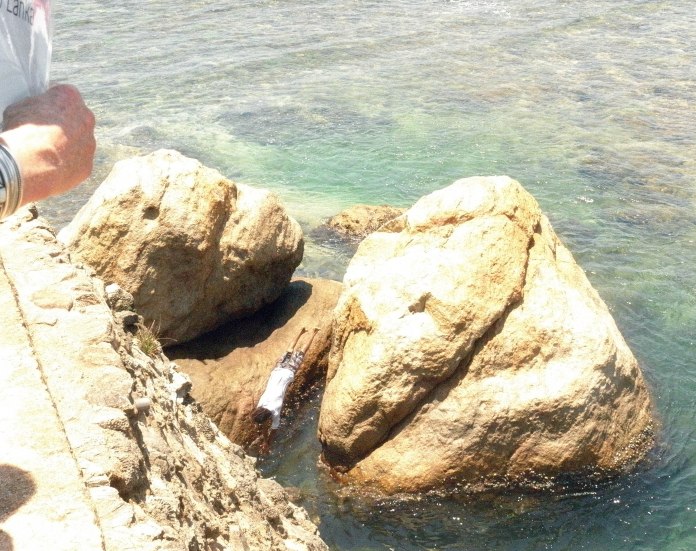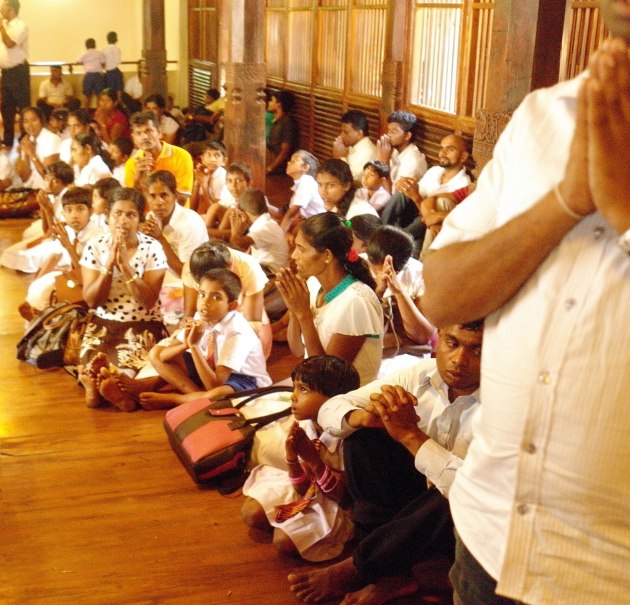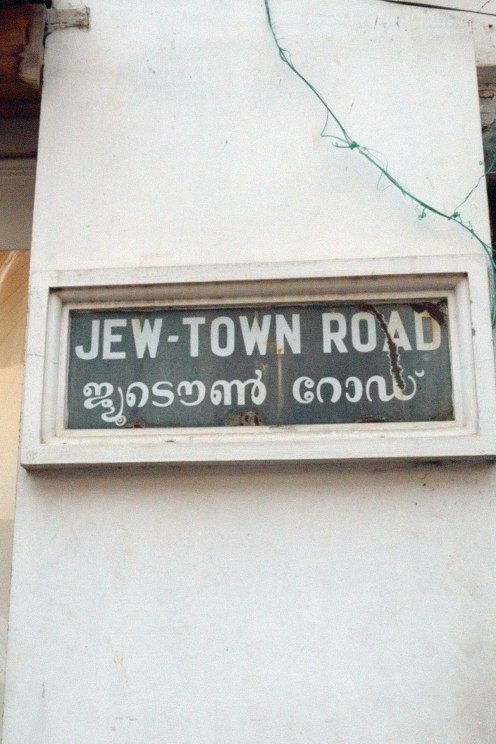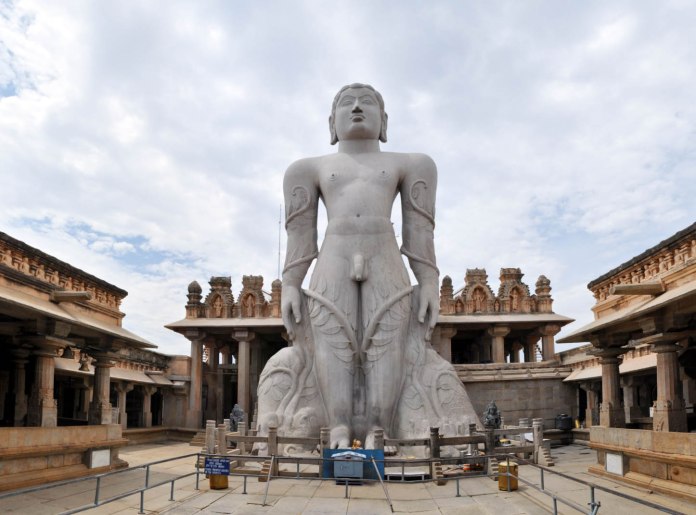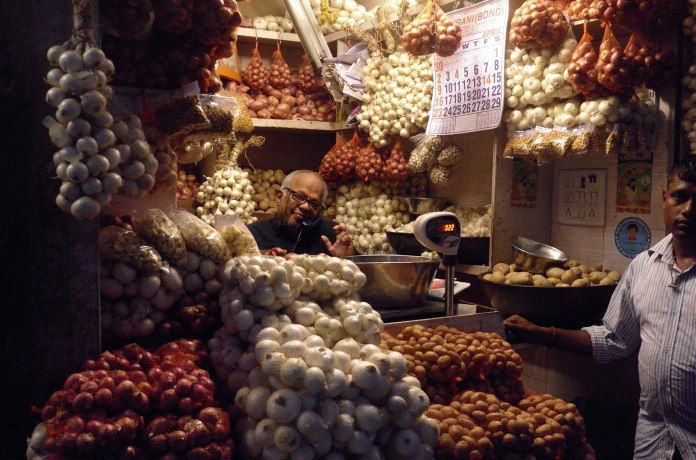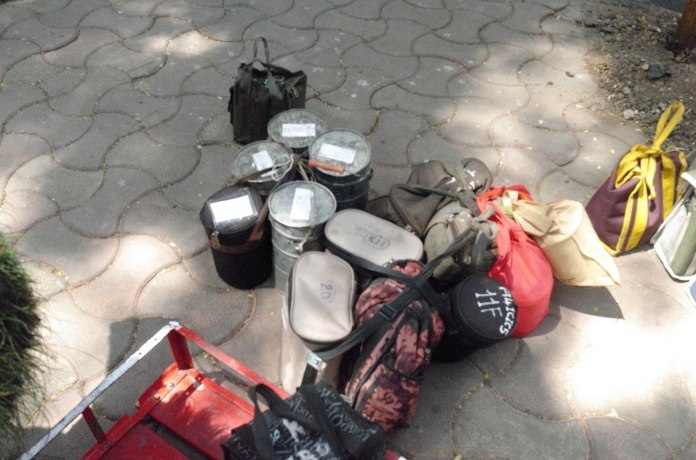Near the top of Mary Jean’s and my “bucket list” of travel destinations are Southern India and Sri Lanka. We had both previously traveled to northern and central India, but spice-rich Tamil Nadu and Sri Lanka still beckoned.
No such trip was on our agenda. We were planning a month in Provence in June (the one part of France in which we never lived), the kids and grandkids were planning to visit us in the village of Lourmarin where we had rented a house, and this was not the time to get sick traveling in India (as has almost always happened on our previous trips).
Then, in mid-January, an email arrived from Dartmouth’s Alumni Travel Office. “Was I free to serve as the Dartmouth Guest lecturer on a two week cruise around South India and Sri Lanka?” The prospect of shipboard dining free of the risks of Indian food (and a ship’s doctor just in case) made our answer easy. “Delighted,” I replied.
Since I had lectured on Indian religions for years in our introductory course, preparing three lectures was a welcome task. In short order I had one illustrated lecture on “Indian Sacred Geography” (Indian cosmology and its manifestation in sacred spaces, such as temples); a second lecture on “Suffering and Salvation” (time, karma, caste and liberation); and a third in progress illustrating The Ramayana. Here’s a map of the voyage from our cruise brochure):
(Reprinted with permission of Criterion Travel. Image By Alexis Vilay © Criterion Travel, Inc.)
A word here about the title of our cruise, “South to Serendib.” Serendib is an early name for Sri Lanka. It derives from a combination of the name of one of the island’s dynasties (the Cheras) and a second term for “island” (dheeb); hence “Cheradeep,” or Serendip. The term “serendipity” was introduced in the 18th century by Horace Walpole (1717-1797) who was inspired to invent it by a Persian fairy tale “The Three Princes of Serendip,” whose heroes were always making surprising discoveries by accident and sagacity. An appropriate title, I thought, for a surprising trip that we had not planned on.
SATURDAY, MARCH 25
Following a long flight from Boston to Chennai via Frankfurt, we arrived at our hotel, the Taj Coromandel, around three on Saturday morning, giving us a late start the next morning on this pre-program day.
Chennai (formerly named Madras) did not impress. Lacking the grace of Mumbai (Bombay) or the British colonial monuments of Delhi, it appeared by night and day as a jumble of unremarkable buildings on busy, crowded streets. (In fairness, we really got to see little of the city on our brief half-day stay.) We made one foray out of the hotel to pick up nail polish for Mary Jean (forbidden on the plane), but it was a death-defying effort. Crossing the street in front of our hotel involved dodging an endless stream of fast moving autos, buses, and motorized rickshaws. We were lucky to survive the back and forth crossing.
The afternoon ended as the group of guest lecturers met for the first time to finalize our schedule of talks. Michael Golay of MIT would speak on energy issues and sustainability in the global and Asian context. Martha Crenshaw of Stanford would address the issue of terrorism, particularly relevant to Sri Lanka, which was just emerging from its decades-long Tamil Tiger insurgency. Annapurna Garimella, an Indian scholar, would treat artistic and cultural matters in contemporary India from urban design to fashion (at the end of one lecture, Annapurna would show us how to don a sari). Not present for our planning meeting, but arriving in time for our cruise departure was Peter Galbraith, former ambassador to Croatia and the son of John F. Kennedy’s ambassador to India, John Kenneth Galbraith. Particularly fascinating to me were Galbraith’s reminiscences of watching as his father ably negotiated conflicts that roiled Indian-Pakistani relations.
SUNDAY, MARCH 26
As our luggage was loaded on busses, our tour formally began this Sunday morning with the two-hour trip south to the Shore Temple at Mahabalipuram. I’d wanted to see this ever since my late and respected Indologist colleague Hans Penner had lectured on it during our years of co-teaching Religion One. The site, a series of impressive stone-carved monuments, and a stone-built temple on the shore of the Bay of Bengal, didn’t disappoint.
Here’s a collection of sculptural experiments: large granitic boulders carved to create animal forms such as Lord Siva’s mount, the bull Nandi, and others hollowed out, reproducing the cave-like forms of some of the earliest Hindu temples.
The Shore Temple itself is a jewel-like edifice dedicated to Siva whose park features an assemblage of many sculptures of Nandi. Note the water in the distance.
As we approached the temple I experienced a brief moment of confusion. My impending first lecture on Hindu cosmogony and cosmology would argue that the entrance to a Hindu temple, reflecting Hindu cosmology, ordinarily faces east, the location of dawn, light, and the gods. Yet according to my iPhone compass, the observable opening in the small out-building in the photo above faced due west. But I knew that that outbuilding was a separate structure. Rounding the far side of the building, the side facing east to the Bay of Bengal, I looked up to a blocked portal, the main entrance.
Our day ended as we traveled back to the port just north of Chennai, where our ship, the Island Sky, awaited. Its multinational crew stood by with chilled towels and cold drinks, a welcome refreshment from the warm and humid Tamil Nadu climate. These greetings from an excellent crew after a day’s excursion, and wonderful meals onboard, were always high points of the trip.
MONDAY, MARCH 27
This day was spent at sea, with a plethora of lectures. When planning this schedule, we were all a bit daunted. “Too much?” we asked. But it turned out that the four talks nicely filled an otherwise lazy day at sea. I was particularly fascinated to hear Martha Crenshaw’s brief history and analysis of the Tamil Tiger insurgency, as well as Michael Golay’s contrast of Chinese and Indian energy futures, with his prediction that because of its commitment and technology, China, despite its enormous current pollution problems, may become the world leader in addressing global climate change.
TUESDAY, MARCH 28
We awoke this morning in the northwestern Sri Lankan port of Trincomalee. After breakfast, buses took us inland to the ruins of Polunnarua, a UNESCO World Heritage site.
The two and half hour bus ride to the north-central interior of the island took us through a region that had been torn for almost three decades by the Liberation Tigers of Tamil Eelam (LTTE), also known as the Tamil Tigers, who fought to create an independent Tamil state. The conflict, which began in 1983 and lasted over 25 years, resulted in the death of an estimated 80,000–100,000 people. In the course of the conflict, the insurgents’ indiscriminate violence led to their being labeled as a terrorist organization, while the government side was accused of conducting a campaign of human rights violations. In 2009, with its top leadership captured or slain, the LTTE surrendered. Since then, tourism, which had virtually come to a halt during the conflict, has slowly begun to recover. Our tour was a small a part of that recovery.
Outside the windows of our bus, there was no sign of the conflict. We drove past modest villages sparsely located along the highway and separated by broad expanses of partially flooded rice fields:
Despite its grievous recent history, what first impresses one about Sri Lanka is the greenness of the landscape. Situated just above the equator (between 6 and 9 degrees north latitude) and reasonably well watered by monsoon rains, the island is intensely verdant. Equally impressive is the cleanliness of the landscape. Although Lanka is a poor nation, (Its per capita GDP at $3,900, which, although twice as large as India’s, is dwarfed by the U.S.’s at $57,000.) it’s amazingly orderly and clean. Roadsides are free of debris, and villages are tidy, a striking contrast with India, whose roadsides are littered with paper, plastic, and garbage (see photo below at April 2). When I asked our guide Latif how he could explain the difference between the two neighboring countries, he replied simply, “Buddhism” and added, “Buddhism teaches cleanliness.” Frankly, I’d never heard that before, but it’s a hypothesis worth pursuing.
Polunnarua is the remains of what was once a major political and religious complex, the capital of the ruling dynasty from the eleventh through thirteenth century. In some cases, brick interior structures are all that remain of what were once magnificent stone-clad temples and stupas. The famed relic of the Buddha’s tooth (his left canine), which, now resides in the Temple of the Tooth in Kandy, spent one of its stays here as local monarchs sought legitimation through religious symbolism. Here are some images from our visit.
Remains of the Royal Palace:
A beautifully carved entrance stairway to the temple compound:
The remains of one of the temples at the site:
The exterior wall of the stupa (reliquary) that is said to have once contained the Buddha’s tooth:
And the stupa itself:
As we prepared to board our bus for the journey to another part of the compound, a local monkey family looked on.
A few minutes drive away was the gargantuan stupa of Ronkoth Vehera:
And here a series of Buddha sculptures at Gal Vihara . . . .
. . . . with the Buddha in his reclining position:
WEDNESDAY, MARCH 29
Evening was spent in a fine shipboard meal and then sleep, as the eastern coast of Sri Lanka slipped by. We awoke with the ship docked in Hanbantota, an expansive, well equipped but still almost unused port on the island’s southern coast. The port and nearby international airport were built in the wake of the 2004 Indian Ocean tsunami that devastated Hanbantota and killed more than 4500 people in the area and thousands more in Sri Lanka. To build the port and airport, the government drew somewhat controversially on substantial Chinese investment, but its dreams of a major, tax-free transfer zone for east-west commerce have not yet materialized, and our diminutive ship was alone among the largely empty piers.
But Hanbantota is a jumping off place for the remarkable Bundala National Park nature reserve, a 25-square-mile wildlife sanctuary that in 2005 was declared a Man and Biosphere Reserve by UNESCO. Following a short, 15-kilometer bus ride, we transferred to four-wheel drive vehicles and began a bumpy tour of this vast and pristine marsh with its many species of birds, reptiles, and large mammals. Here, briefly, is a selection of images:
One of the safari vehicles:
A stretch of marsh:
Water buffalo grazing:
A termite mound:
A tiny dragon:
A handsome peacock:
And, as dusk fell, we witnessed the sudden appearance of an elephant:
One of the wonderful things about Sri Lanka is that elephants range free throughout the island. But they face many risks, whether from collisions with motor vehicles or from the wrath of farmers whose crops they threaten. Human-Elephant Conflict (HEC) is a major cause of elephant mortality. In two days, as a stop on our way to Kandy, we would visit the Pinnawala Elephant Orphanage, where a herd of seventy elephants whose mothers were killed or lost is maintained.
THURSDAY, MARCH 30
The short overnight sail took us to Galle on the island’s southwestern tip. Occupied over the centuries in succession by the Portuguese, Dutch and British, Galle bears the marks of each culture. Here, for example, is a scene that could come right out of a small British village:
Here, a Dutch reformed church:
The fort, built by the Portuguese and now a UNESCO World Heritage site, dominates the seafront:
On a promontory a young entrepreneur sells his skill at diving from the high rocks below into the sea:
As our day ended, we crossed paths with a group of schoolchildren visiting the fort. Note the boys’ neat white shirts.
Is this another token of Sri Lankans’ commitment to cleanliness (keeping whites clean is hard work in this steamy environment)? More to be noted is Sri Lanka’s adult literacy rate of 93 percent and 90+ percent secondary school attendance. The government furnishes education free for all children. Here, again, the contrast with India is striking. Adult literacy there, although making significant gains in recent years, stands at only 75%. School attendance in India is also dependent on family income, with the result that only about half of boys attend secondary school and even fewer girls do so. So Sri Lanka, despite its recently tortured history, shows that culture and values play a larger role in a nation’s advancement than GDP alone.
FRIDAY, MARCH 31
Morning found us docked in the picturesque harbor of Colombo, the island’s west coast port and largest city. Note the large stupa at the center styled on the casket that holds the Buddha’s tooth:
Our group split in two, one group heading by train to Kandy and the nearby Royal Botanical Garden, the other, which included us, taking busses to Kandy with a stop mid-way at the Pinnawala Elephant Orphanage. There are critics of this facility who believe that too much time is spent showcasing the herd to tourists and too little seeking to return the animals to the wild. But given the dangers posed to Sri Lanka’s elephants by Human-Elephant Conflict, I wonder whether the public education afforded by this facility doesn’t justify its existence. During our visit, a school holiday, scores of schoolchildren were enchanted by their contact with these amazing creatures. These children will shape the future of the island’s free ranging pachyderms (again note the girls’ white outfits):
Here are some photos from our visit.
Feeding time:
An elephant stroll:
Down to the river for a daily bath and shower:
After leaving the orphanage, we continued on to Kandy and the Temple of the Tooth. I’ve wanted to see this since Hans Penner described his visit to me many years ago. Following Hans’s visit, however, the temple experienced a terrible episode in 1998 when Tamil insurgents detonated a massive truck bomb at the entrance. The bomb killed sixteen people, including the three attackers and a two-year old infant. Twenty-five people were injured and the temple itself was badly damaged.
Although visitors must pass through a security check at the entrance, none of this history is evident today. A walkway lined with flowering trees leads up to the temple:
Approaching the golden casket that houses the tooth, one can buy flowers to honor the Buddha:
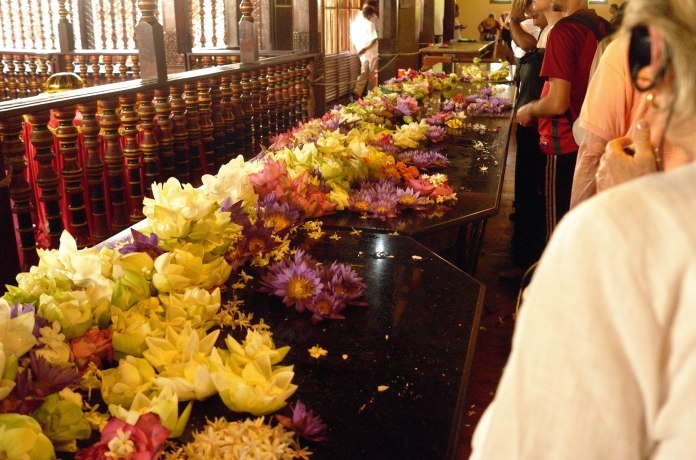
Here worshippers venerate the sage:
The tooth itself is contained in a stupa-like gold casket about six feet high. The casket is kept in a chamber behind this protective tapestry and is displayed only during an annual festival. You can see a depiction of the casket on the tapestry:
Here’s some detail of the temple itself:
At 1600 feet altitude, Kandy is a bit cooler than coastal Sri Lanka, but a day spent in Sri Lankan heat and humidity can be enervating. So we were pleased to end the day with a return to port on board an air-conditioned (but vintage) train. Some images:
SATURDAY APRIL 1
Farewell lovely Sri Lanka. We awoke this morning in the Indian harbor of Trivandrum surrounded by colorful fishing boats. The large statue of Jesus was a first sign of the strong Christian presence on this southwestern Indian coast:
Our visit to this city of seven hills would include three sites, the Napier Museum with its extensive collection of Indian religious statuary and artifacts; the Kuthira Malika palace, a maharaja’s edifice fantasy and testimony to the unbridled wealth of indigenous potentates in the pre-colonial era; and an outside glimpse at the Padmanabha Swami Temple, with its mammoth Dravidian-style gopura entrance gate.
As we approached the Napier Museum, we passed a colorful kiosk:
Some flower vendors:
And a striking topiary at the entrance to the museum:
The Napier Museum is a nineteenth confection of British and Asian architecture. No photographs are permitted in the interior, but the outside is itself an objet d’art.
I couldn’t resist this photo of an Indian dog near the entrance to the museum. All such dogs in both Sri Lanka and India seem roughly of the same indistinct breed (though of different colors), and all think nothing of bedding down on the floor of a bus depot, or otherwise busy thoroughfare:
Taking pictures was also forbidden inside the Kuthira Malika Palace, the seat for generations of the Travancore Royal Family. Its wooden construction is famous for multiple horse sculptures reflecting a passion of the monarchs. I confess, too, that the confined spaces and daunting heat and humidity made this a difficult visit. What was impressive was the evidence of the vast wealth of these local rulers and their strong relationships with the British aristocracy. This was a reminder that caste and hierarchy were ideas that didn’t divide but united the British of the Raj and their Indian subjects.
Wealth was on our minds as we emerged from the palace into the short street leading to the Padmanabha Swami Temple. As Westerners, we couldn’t enter its interior precincts, just as lower caste Hindus were once forbidden from doing so. Even today, qualified Hindu visitors like these must don temple garb to enter this sacred site:
The temple entry is guarded, and intruders warded off, by this impressive demon figure, and, as we’ll see, for good reason.
Recently, five of six sealed underground chambers in the temple were broken open by the Indian government and were found to contain an enormous treasure in gold and jewelry: the fruits of centuries of temple donations by dynasties seeking favor from Vishnu, the lord of the temple, and from the rulers that controlled it. Here is a website offering stunning pictures of the treasure found so far. http://www.storypick.com/padmanabhaswamy-temple/
Based on of what has been found to date, the treasure is said to be worth around $18 billion, not counting its antiquity and cultural value. Some believe that when the sixth chamber is opened—it is currently “guarded” by a serpent bas-relief threatening death to trespassers—the total value of the treasure could reach one trillion dollars, making Padmanabha Swami the richest religious edifice in the world. The central Indian government and Kerala government are currently disputing control of this wealth.
Here is the single large gopura (gate) of the temple itself.
SUNDAY APRIL 2:
With a close friend whose family emigrated from Kerala, and having read many accounts over the years of this unique state of India, I had long wanted to visit.
Kerala is known for its religious diversity (about twenty percent of its citizens are Christians, who date their community from a founding visit in the first century by the apostle Thomas). For over fifty years, it was ruled by a local version of the Communist party (which lost power to the Congress Party in 2011), and the state’s social progressiveness is reflected in its 94% adult literacy rate. Our brief visit to the state’s largest city, Kochi (previous name “Cochin”) and its environs did not disappoint. Arriving overnight, we docked at a mammoth port facility, and in the morning bussed into the Jewish sector of the city. “The Jews of Cochin” are also an ancient community, claiming a presence in India since the time of King Solomon. Others date their presence from the twelfth century, and in the fifteenth and sixteenth centuries following the expulsion from Spain, there was also an infusion into Cochin of Ladino-speaking Jews.
Sadly, little of this remains. “Jewtown,” as it is unashamedly called, features shops selling Jewish-themed trinkets. But with most of the Cochin Jews having emigrated to Israel, only a handful of Jews remain. These must join with the small number of others in the city and suburbs for occasional religious services in the Pardesi (“foreigners”) Synagogue. We were able to purchase a yarmulke and challah cover (for my sister and brother-in-law) that were handmade by a ninety year old Jewish woman whom we glimpsed through a window reading a religious text—one of the last of the Cochin Jews.
Some images of Jewtown:
Afternoon was an adventure to which I had long looked forward, a houseboat cruise through Kerala’s many interconnecting waterways and lakes. A one-and-half hour bus ride 55 kilometers south of Kochi took us past the usual array of colorful Indian sites. Here are some images from the bus of a temple festival underway:
A temple cart:
Arriving near the city of Alappuzha, we boarded our houseboat. Steered by a wiry helmsman, we joined the many other boats plying the waterways
The streams, canals, and lakes of Kerala are major centers of residential and commercial activity. Some of the commerce has waned but is being partly replaced by this large houseboat industry. Here are some images of our tour:
Boys bathing in the canal beside their home:
At one point, our houseboat (and the others in our party) pulled up along the side of a canal to give us a closer look at the village culture that lines the waterways.
It’s for good reason that India in general (and its south in particular) is regarded as the land of spices, since almost every savory plant flourishes here. As we walked, we could see spices drying:
Pepper growing (during the middle ages, this valuable Indian export cost more than salt and was sometimes used in food preservation):
A canalside house:
Maybe this is the moment to mention the dirt of India. Passing by this dwelling, I noted this open sewer. It’s estimated that 50 percent of Indians (mostly rural people) lack indoor toilets and just use fields, lots, or shorelines to do their business. Prime Minister Modi has initiated a “clean India” drive to spur the installation of indoor toilets, but according to one of our guides, this effort has been slowed by underfunding and corruption.
Contrast this with the beauty of India. On a nearby footpath, a group of friendly ladies in saris wave hello:
Further along, at the dock where we were picked up, a Communist flag waves proudly.
Having mentioned dirt above, here’s a photo snapped from the bus on our return. It’s a typical roadside in Kerala. The contrast with clean Sri Lanka couldn’t be more evident:
MONDAY, APRIL 3
We remained in Kochi this morning, visiting sites we had missed the day before, including these fisherman who utilize cantilevered nets to pull fish out of the sea:
Large stones provide counterbalance and permit the men to pull the catch-laden nets from the water:
Here’s the result of a morning’s work:
Following a visit to the interior of the Pardesi Synagogue (photography forbidden) we returned to the ship and departed for the start of a long run up India’s western coast that would eventually take us to Mumbai (which apparently everyone still prefers to call “Bombay”).
TUESDAY APRIL 4
Morning found us in Mangalore, where a bus tour took us inland first to Moodabidri and the thousand-pillared 15th-century Jain Saavira Kambada temple. . . .
. . . . and following that to nearby Karkala and the mammoth statue of Bahubali, a Jain adept and liberated soul (siddha) who escaped the stream of karmicly determined death and rebirth (samsara). Standing high on a hill overlooking the surrounding landscape, this tenth century monolith, 57 feet high and carved from a single block, is one of the largest freestanding statues in the world. Legend has it that Bahubali stood erect and unmoving in meditation for one year before attaining liberation, during which time vines grew his legs, as you can see on the statue:
Before returning to the ship, we had a buffet lunch at Soans Farm, an innovative agricultural plantation that has successfully introduced new varieties of pineapples and other tropical plants into the region.
WEDNESDAY APRIL 5
We awoke this morning docked in the harbor at Goa, a former Portuguese possession for hundreds of years that remained an overseas province of Portugal as late as 1974. Since we had a good stretch of Indian ocean to transit before reaching Mumbai, this stop was short: a 7AM departure for a three-hour visit that included a UNESCO World Heritage site, the Basilica of Bom Jesus, containing the casket of St. Francis Xavier, and then a visit to the State Archaeological Museum. But awakening somewhat tired and with a lecture to complete, I decided to skip this tour. That afternoon, I enjoyed delivering my illustrated lecture on the Ramayana. As Diana Eck argues in her India: A Sacred Geography, Rama’s travels mark off many of the sacred sites of the Indian subcontinent, recapitulating in reverse some of our trip. So it was a treat to be able to introduce the travelers to this wonderful story of Rama’s loss of his beloved wife Sita and his struggle to recover her with the help of his brother Lakshmana and the wily trickster Hanuman.
THURSDAY, APRIL 6
Today, we’ve arrived at Mumbai and the end of our journey (though some travelers would go on to a post-trip excursion to Ajanta-Ellora, which I had visited years ago with my then teenage son, Matthew). Travelers would depart our bus tour in waves throughout the day, but we had much of the morning together to visit sites around the city.
Here we are aboard the bus, proceeding along the city’s attractive shoreline.
En route, we paused briefly beside the Taj Hotel. Here’s the old part of the hotel:
And here its modern tower:
The Taj first opened in 1903. Popular accounts (not entirely reliable) have it that Jamsetji Tata, founder of the great Tata industrial empire, decided to build the hotel after he was refused entry to one of the city’s grand hotels that was restricted to “whites only.” Tragically, in 2008 terrorists arriving in small boats staged a bloody attack and occupation of the hotel. Indian authorities, our guide opined, were slow in responding, and the attack ended with the deaths of 164 victims.
Our next stop was the Crawford Market, a rambling assemblage of food vendors in a series of buildings, some of which are now undergoing renovation.
Here’s a newer part of the market:
No need for a shopping cart. On entering the market, you can hire one of these fellows to carry your purchases:
A beautiful basket of acid limes, a variety I had never seen before:
Equally unusual and attractive melons:
A pluck of chickens:
A merchant amidst his wares:
India’s (and much of Southeast Asia’s) favorite mood-enhancing drug is betel. Here in a corner of the market a vendor prepares the stimulant by wrapping ground Areca palm nut in a betel vine leaf that has been coated with lime. Chewing this turns the user’s mouth and teeth a red color, as it does the floor or sidewalk when the used-up mixture is spit out.
Leaving the market, our next stop was a modest museum-library dedicated to the life and thought of Mahatma Gandhi. A nicely done bas-relief adorned the entrance:
The interior walls were lined with framed quotations from the Mahatma. This one struck me as particularly wise:
A room on the top floor of the museum offered a re-creation of Gandhi’s quarters in his ashram near Ahmedabad. Spinning wheels symbolizing his call for a return to Indian economic self-reliance and indigenous craftsmanship line the wall:
Our next stop took us to the rail station to watch dabbawalas perform their miracles. This core of workers distributes over 130,000 lunchboxes every working day throughout Mumbai. The insulated boxes are filled in the morning by the worker’s wife, delivered by suburban rail, picked up by the dabbawalas, delivered to the worker’s office, re-collected after lunch, and returned home by rail. These feats of organization and near perfect efficiency on the part of semi-literate workers have drawn the attention of the Harvard Business Review (https://hbr.org/2012/11/mumbais-models-of-service-excellence) and were celebrated in the 2013 film THE LUNCHBOX.
A collection of lunchboxes just arrived by train:
A dabbawala carrying lunchboxes to the waiting bicycle-mounted deliverymen:
Our own lunch was at an excellent Indian restaurant. After that, busses dropped us at an elegant near-airport hotel, where the travelers could spend the latter part of the day awaiting the evening departure of most of our flights.
To conclude, I must say that this trip was a once-in-a-lifetime experience. There was no way, traveling on our own, that we could have seen all the destinations that we did. The local guides throughout and the excursions were terrific. With our two bus tours to the interior and circumnavigation of Sri Lanka, I feel we had an extraordinary introduction to this beautiful island nation. I’d like to go back. And in our stops in Tamil Nadu, and Kerala, in particular, we deepened our understanding of the Indian subcontinent. Our fellow travelers, including alumni of Harvard, Stanford, MIT and Dartmouth, were wonderful conversation partners and responders to our lectures.
While traveling I had a chance to read Jene Drèze and Amartya Sen’s 2013 book, An Uncertain Glory: India and Its Contradictions. Drèze and Sen note India’s astonishing recent economic growth (7% per year), but its lingering problems of illiteracy, inequality, and sexism. They contrast India with Bangladesh, which, with half the GDP, has made better progress in education and the inclusion of women in society. For me, this trip confirmed their general finding. India is an emerging giant on the world stage and still one of the most remarkable cultures in the world. It is always worth the visit. But to advance further, India will have to follow the lead of its tiny neighbor Sri Lanka in creating a clean and sustainable environment, educating its citizens, and affording all of them, regardless of sex, caste, or income, greater equality of opportunity.





